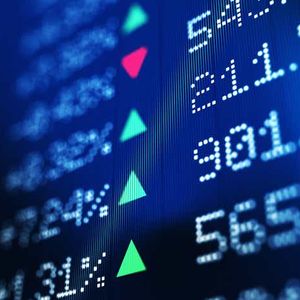Asia stocks trade mixed after US-China Tariff truce; U.S. futures lower ahead of key inflation report
4 min read
Asia stock markets trade mixed on Tuesday following a rally on Wall Street overnight after news of a temporary easing in U.S.-China trade tensions, with the U.S. set to cut tariffs on Chinese goods from 145% to 30% starting Wednesday, while China will lower retaliatory tariffs on U.S. goods from 125% to 10%. President Trump stated Monday that China will suspend and remove “non-monetary” trade barriers on U.S. goods, indicating that further progress in negotiations could lead to more concessions. Meanwhile, traders are also watching developments on Russia-Ukraine talks after Ukrainian President Volodymyr Zelensky has invited President Trump to participate in potential peace talks in Turkey this week, as Kyiv continues to push for a cease-fire. Gold dropped below $3,230 per ounce on Tuesday, marking a second straight day of losses and hovering near its lowest level in a month. Japan ( NKY:IND ) rose 1.72% to above 38,400, while the broader Topix Index rose 1.8% to 2,790 on Tuesday, as Japanese equities hit multi-month highs. The Japanese yen held around 148 per dollar on Tuesday after losing about 2% in the previous session. In a related development, Japanese Prime Minister Shigeru Ishiba emphasized that Japan will not accept an initial trade agreement with the US unless it includes provisions on the auto sector, urging Washington to eliminate its 25% tariff on Japanese cars. Separately, the latest Bank of Japan summary of opinions showed policymakers favoring a cautious stance amid heightened uncertainty over economic and price developments. BOJ Deputy Governor Uchida also warned that US tariffs continue to exert downward pressure on Japan’s economy. China ( SHCOMP ) rose 0.20% to surpass 3,380, marking its highest level in nearly seven weeks, as an initial trade agreement between China and the US continued to buoy investor sentiment, the offshore yuan strengthened to around 7.18 per dollar on Tuesday, marking its third consecutive session of gains and returning to its highest level since November 2024. China’s agreement to eliminate non-tariff barriers on US goods, as stated by President Trump, builds upon a recently established 90-day trade truce. This temporary agreement saw the US decrease tariffs on Chinese imports from 145% to 30%, and China reduce its tariffs on US goods from 125% to 10%, with most other tariffs also suspended. Officials from both countries are expected to meet again in the coming weeks to begin discussions on a more comprehensive trade pact. Separately, China will extend nearly USD 10 billion in yuan-denominated credit lines to Latin American and Caribbean nations to support development, President Xi Jinping announced on Tuesday in Beijing at the China-CELAC Forum. Hong Kong ( HSI ) fell 1.37% to 23,205 during Tuesday’s morning session, snapping an eight-day winning streak as investors locked in profits after the Hang Seng hit a 1-1/2-month high. India ( SENSEX ) fell 1.19% to 81,748 in Tuesday morning trade, after the index hit its highest in four years a day before. India has notified the WTO of its proposal to impose import duties on certain U.S. products as a countermeasure to U.S. tariffs on Indian steel and aluminum, Reuters reported on Monday. The WTO notice indicated that India plans to raise tariffs on these selected U.S. goods. Traders continued to monitor geopolitical tensions, amid a fragile ceasefire agreement between India and Pakistan, after the two countries reached an understanding to stop the firing and military actions on Monday. Australia ( AS51 ) rose 0.42% to around 8,300 on Tuesday, reaching its highest level in over two months. The Australian dollar stabilized around $0.638 on Tuesday after facing heightening volatility in the previous session. Australia’s NAB Business Confidence Index rose to -1 in April 2025 from a marginally revised -2 in March, reaching its highest since January. Australia’s Westpac-Melbourne Institute Consumer Sentiment Index rose by 2.2% mom to 92.1 in May 2025, rebounding from a 6.0% fall in April, supported by a rebound in financial markets and the resolution of uncertainty following the Federal election. Private house approvals in Australia declined by 4.5% month-over-month to a 13-month low of 8,804 units in March 2025. In the U.S., on Monday, all three major indexes ended higher after the US and China agreed to temporarily slash tariffs, easing fears of a prolonged trade war and possible recession. U.S. stock futures slipped on Tuesday as investors cautiously awaited the latest Consumer Price Index report for clues on how the new tariff regime is influencing inflation: Dow -0.26% ; S&P 500 -0.34% ; Nasdaq -0.46% . Traders will closely watch inflation data later this week for signs of how the new tariff regime could affect prices. Markets are also looking ahead to upcoming retail sales and producer price data later in the week for further insights into the health of the economy. Currencies: ( JPY:USD ), ( CNY:USD ), ( AUD:USD ), ( INR:USD ), ( HKD:USD ), ( NZD:USD ). More on Asia: Trump set to unveil trade deal with UK on Thursday – report China service growth hits 7-month low as trade disruptions weighs on new business orders Australia private sector expands at 51 in April, services sector expands for 15th straight month Australia inflation gauge eases slightly in April by 0.6% Australia Q1 producer price inflation beats estimates; retail sales rises 0.3% in March

Source: Seeking Alpha



